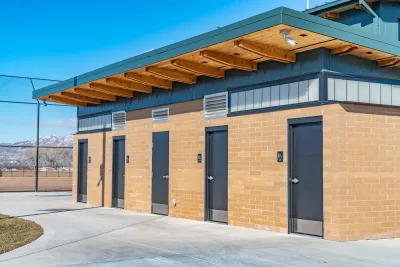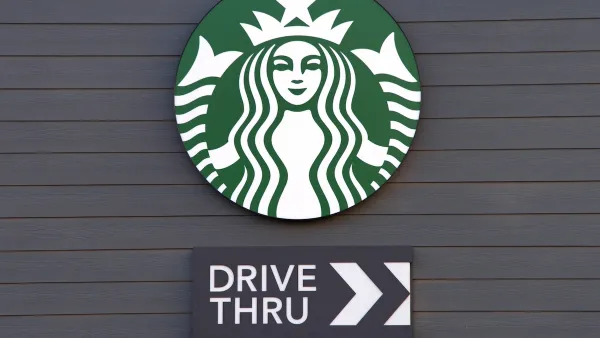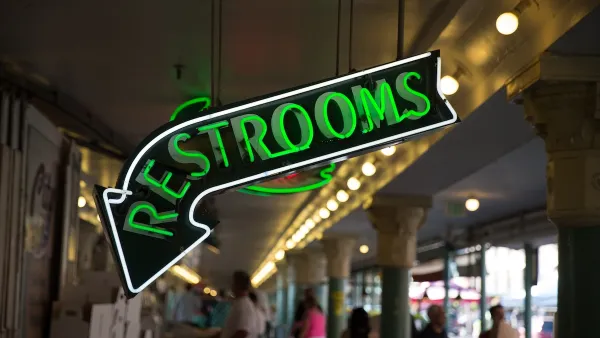The outrage over the chain’s decision to limit the use of its bathrooms should prompt more questions about why the U.S. lacks public restrooms.

As Starbucks shifts its policy to limit people from using its restrooms and facilities, Lloyd Alter argues that “what is truly outrageous is that citizens are forced to use private washrooms because there are almost no public ones in North America.”
In many countries, the Starbucks problem wouldn’t exist — because there are ample public restrooms available for use. “According to the Public Toilet Index, New York City has four toilets per 100,000 people; in Iceland, there are 56.”
Authorities say providing public washrooms can't be done because it would cost “hundreds of millions” but never have a problem spending billions on the building of highways for the convenience of drivers who can drive from home to the mall where there are lots of washrooms.
Alter concludes that public restrooms should be a common good provided by the government, “This is why we pay taxes — for public services that meet human needs.” As Harvey Molotch wrote, “That there is so often no way to satisfy a necessary bodily function is symptom of the larger callousness — of ignoring basic human needs. The trouble is a dearth of civic responsibility.”
FULL STORY: Starbucks is No Longer ‘America’s Bathroom.’ It Never Should Have Been.

National Parks Layoffs Will Cause Communities to Lose Billions
Thousands of essential park workers were laid off this week, just before the busy spring break season.

Retro-silient?: America’s First “Eco-burb,” The Woodlands Turns 50
A master-planned community north of Houston offers lessons on green infrastructure and resilient design, but falls short of its founder’s lofty affordability and walkability goals.

Delivering for America Plan Will Downgrade Mail Service in at Least 49.5 Percent of Zip Codes
Republican and Democrat lawmakers criticize the plan for its disproportionate negative impact on rural communities.

Test News Post 1
This is a summary

Test News Headline 46
Test for the image on the front page.

Balancing Bombs and Butterflies: How the National Guard Protects a Rare Species
The National Guard at Fort Indiantown Gap uses GIS technology and land management strategies to balance military training with conservation efforts, ensuring the survival of the rare eastern regal fritillary butterfly.
Urban Design for Planners 1: Software Tools
This six-course series explores essential urban design concepts using open source software and equips planners with the tools they need to participate fully in the urban design process.
Planning for Universal Design
Learn the tools for implementing Universal Design in planning regulations.
EMC Planning Group, Inc.
Planetizen
Planetizen
Mpact (formerly Rail~Volution)
Great Falls Development Authority, Inc.
HUDs Office of Policy Development and Research
NYU Wagner Graduate School of Public Service





























